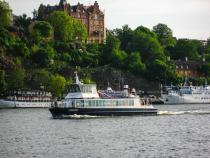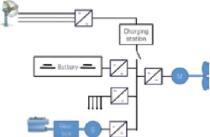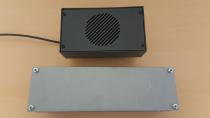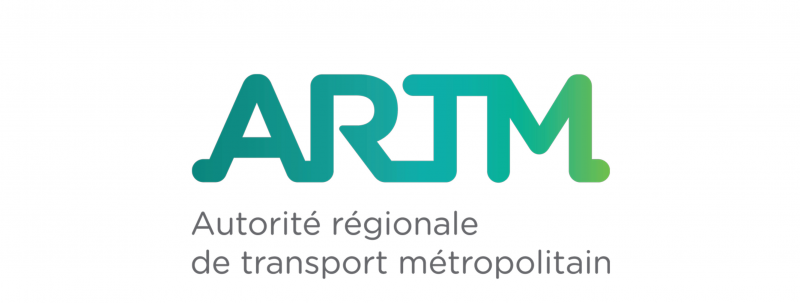Supercharging – A Solution for Operators

When I first met the owners of Stockholm-based Echandia Marine, I was intrigued by the concept they were developing. Unlike all the other alternatives I had seen up until that point, they were proposing a superfast charging solution for commuter passenger ferries in the 100 – 150 pax range. In other words, unlike their competitors they were looking at what a battery powered, all electric drive system could do for the operator rather than what the operators had to do to adapt their services to suit an all-electric, limited range, slow charge drive system. Not only that, but they had also developed a pod unit which offered a standard of manoeuvrability that would eliminate the need for a bow thruster.
Today, the company’s first fully functional, commercial system is installed on the E/S Movitz, a 98 passenger vessel that operates a fifty minute service between the centre of Sweden’s capital, Stockholm, and the bustling suburb of Solna Strand.
“Our idea was to create a technical platform that would offer unprecedented efficiency for the operator, a vastly improved environmental footprint for the city and a smooth, quiet ride for passengers,” says Magnus Eriksson, founder of Echandia Marine. “It was clear from the outset that we would have to charge the batteries extremely fast, so we began looking for a supplier who could provide us with the battery technology we needed to allow us to do this during a short stop at the end destination.”
This was no mean feat, as the team had set a goal of a maximum of ten minutes charging for one hour of operation.
Enter Nilar
The solution proved to be available close to home and, in 2011, an agreement was reached with Swedish based Nilar, who could provide precisely the kind of batteries Echandia required.
Nilar was founded in 2000 by Lars Fredriksson and Neil Puester, who both have a long track record in the design and development of cutting edge battery technology. The company has two R&D facilities – one in the United States and the other at its headquarters and main manufacturing facility located in Gävle, Sweden. “It has been quite a journey for us,” comments Nilar’s Director of Marketing, Marcus Wigren. “We started off developing small scale batteries for power tools and wheel chairs, and can now provide off the shelf and bespoke high power, bipolar battery and associated management systems for a multitude of fixed and mobile applications.” “It has always been a challenge for battery developers to create a stable, efficient and safe bipolar design,” explains Wigren. “What we have managed to do is optimize the parameters of our stacks making them highly efficient through decreased resistance and more stable pressure within the cell, which has enabled us to work with higher input and output currents.”
The design also means that the utilization rate of active materials – cobalt-coated nickel hydroxide and metal hydride – has been significantly increased, meaning better efficiency in both the charging and power provision phases.
“Utilization is currently above 98 percent of the theoretical capacity,” he says. “This means that we are able to exploit a larger amount of the total available discharge capability than has previously been possible.”
But bipolar batteries have traditionally faced a problem which other manufacturers are still struggling to address.
“Bipolar batteries have a tendency to dry out, which means that their efficiency is reduced over time,” says Wigren. Nilar’s solution was to focus on developing a special kind of seal which has hydrophobic properties and incorporates a gas channel that encases each cell.
“By using a multifunctional seal design, we have been able to solve this issue and, at the same time, are able to greatly reduce the complexity of the battery, which means that the manufacturing process could also be simplified.”
In essence this means a more rational use of space and fewer parts leading to a smaller, more efficient and lighter stack.
The Movitz project
The E/S Movitz (E/S stands for Electric Ship and it is operated by Stockholm based Green City Ferries) uses a Nilar bipolar nickel metal hydride (NiMH) battery installation of 180 kWh, which is sufficient for two hours of operation. Charging is done through a 600 kW connection from land every time the ship returns to its end stop. Two gensets have been installed on the vessel as a backup and to guarantee trouble-free wintertime operations.
“One problem we have is that, in winter, ice forms on Stockholm’s Lake Mälaren where Movitz operates. In order to ensure that the batteries always have a direct source of power, and to maintain a regular timetable, we installed two small diesel gensets,” comments Magnus Eriksson. “However, we are currently investigating other forms of sustainable, onboard power sources to replace these.”
In practice, this means that in places that receive a lot of sunlight, solar panels can be installed to provide onboard charging and, as the development of fuel cell technology moves forward, they can also be used as an alternative. Ultimately, with developments in battery technology moving as fast as they currently are, Eriksson envisages that, in future, back-up systems will become redundant altogether.
There are two 125 kW pods powering the E/S Movitz. They are mounted at the stern at a depth of 1.5m and can either be operated independently or in tandem. The propulsion motors are of a permanent magnet type and are cooled directly by the surrounding sea water.
“All of the work that went into developing our pods has been focused on efficiency. Everything has been optimized to ensure that the system is as simple, reliable and robust as possible. On the E/S Movitz, our steering management system allows the pods to be turned up to 30 degrees in either direction, which has proven to be the most efficient angle for this vessel, although angles of up to 180 degrees are possible. We have therefore been able to completely do away with the need for a bow thruster, while still being able to turn the vessel on the spot. Also, the pods can be positioned so that they clear broken ice from a channel while the vessel is moving through the water in the winter,” Eriksson explains.
Ten minute charging
The E/S Movitz is charged using electricity sourced from wind energy at its final stop, where a supercharging installation of 600 kW is located on the quayside. Currently, the connection has to be made by hand, but in the future, this will be replaced by a fully automated unit, based on a simple, yet ingenious design.
“You have to remember that a ship moves with the water and, even though docking solutions are available to minimize up and down motions, there will always be some movement. Therefore, we are currently testing an automated connection which provides constant contact,” explains Magnus Eriksson. “We need to ensure that the auto charging unit is robust, efficient and safe. So far tests have proven that we can achieve this and we are now entering a phase where we are finalizing the production drawings for this installation.”
Newbuilding or refit?
So what is the cost of going electric? According to Echandia Marine’s CEO, Joachim Skoogberg, the numbers play out irrespective of whether you are talking about newbuildings or refits.
“The cost of an installation is obviously dependent on the operational profile you are planning for,” says Skoogberg. “In a newbuilding you can simply design engine room spaces as required and install all the main technical components, such as batteries, inverters, management systems, etc., before laying the deck and building the passenger space. In this instance, costs for construction are higher than for a traditional diesel powered vessel due to the batteries. In a refit, other parameters come into play in that you need to first remove the old engine and its associated components, which is time consuming and requires major openings to be made in the hull and/or floor sections of the ship. Once this has been done, installation of an electric drive train goes relatively fast. However, a refit means that capital costs for the entire project are far lower than for a newbuilding.”
Costs and gains
The claim that you can charge for ten minutes and then operate for an hour may seem fine in theory, but how does it work in practice? Let’s take a look at the thinking behind this, using an example for the conversion of a sightseeing boat from diesel to supercharged electric propulsion, incorporating a combination of Echandia and Nilar technology.
In this calculation, we have used a standard 25 metre long, 30 ton fibreglass, mono hull sightseeing boat configured to carry 100 passengers on a sixty minute trip.
On average the boat will use 30 kW power. Given that a one hour journey means that 30 kWh of energy will be consumed, if you want to charge 30 kWh in 10 minutes, you will need 180 kW of power. In this instance, the battery pack needs to be bigger than the average consumption, so a 50 kWh battery pack would be sufficient to maintain a regular service.
“In essence, running costs, in terms of energy, are comparable between electric power and conventional, subsidized diesel, as the depreciation of the batteries over their lifetime is included in the cost of the electricity. Based on a generalized European average price of 1 euro per litre of diesel, the ten litres of diesel used during a round-trip would cost approximately 10 euros. Maintenance costs would be around 2 euros per running hour. Total operational costs for a diesel driven boat add up to 12 euros per running hour. As no one believes that the price of oil will fall, or that subsidies for fossil fuels of any kind will remain in place forever, there will be an advantage for electric power seen over the entire lifetime of the investment,” explains Joachim Skoogberg.
An electric vessel has virtually no maintenance costs, but it does have capital costs. “A 50 kWh battery pack costs 60,000 euros at today’s prices and lasts for five years. With an annual depreciation of 12,000 euros for 1,500 operational hours, the capital cost of running the ship comes out at 8 euros per hour. 30 kWh of electricity costs 4 euros, so it all adds up to 12 euros per running hour,” says Skoogberg. “If your total investment is 150,000 euros, minus the price of the batteries, you are looking at a total investment of around 90,000 euros in new equipment. Given a ten year depreciation, your capital costs for equipment are just 6 euros an hour. This calculation can similarly be applied to commuter vessels as well.”
Advantages all around?
The numbers seem to add up. But what about day-to-day operations? For passenger services, there are many advantages to electric power. No noise, no smell and no vibrations make for a more comfortable ride. For the environment, the fact that there are no emissions of CO2, NOx or particles means that a true green solution for inner-city waterway services has become a reality. Maintenance costs are almost zero, which serves to help operators’ bottom lines.
“And we believe that electric power is future proof,” says Skoogberg, referring to the political angle which ultimately affects whether vessels will be operated as part of a city’s publicly funded commuter infrastructure.
“Once an electrically powered ferry in commercial traffic has proven that the technology is viable, and once the passengers have experienced the difference between electric and diesel powered commuting, politicians will have a hard time pulling the plug on future investments of this kind.”
One bone of contention remains, however, and that is the land-based charging infrastructure required – who will ultimately own and operate it? Here, Skoogberg is uncertain. “Vessel operators don’t own the fuelling infrastructure that exists today and they shouldn’t in the future either. I envisage cooperation between local authorities, port authorities and power providers. This way costs are spread between different players, all with an interest in seeing the advancement of electrically powered vessels in city environments, while enabling fast charging solutions to be made available for a multitude of operators. What we at Echandia can do is design and develop multi-use charging points that work across all future vessel platforms.”

























